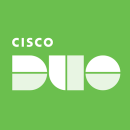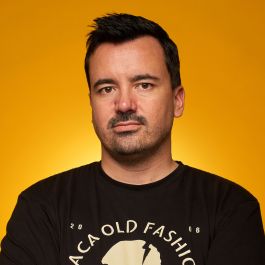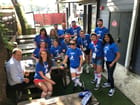
In order for product teams to fully bring their vision to life, they need a product strategy that keeps stakeholders focused on producing the best possible product for customers.
As a product manager, how can you implement a strategy that accomplishes the above? Built In Austin caught up with two local companies — that use similar methodology— to find out.
Ryan Leatherbury, a group project manager at Duo Security, and Chad Boyda, the head of product at AppSumo, share their methods for ensuring their teams are staying true to the product vision while also juggling the demands of various stakeholders and customers.
In order to stay true to their vision, the product team at access security platform Duo uses the objectives and key results (OKRs) framework. Group Project Manager Ryan Leatherbury said that implementing OKRs helps his team communicate and align their goals in order to “build the right thing in the right way.”
What’s your team’s overarching product vision and how do you communicate it across the business?
Our product vision is to provide easy and secure access for the workforce. We protect organizations by verifying the identity of users and the health of devices before connecting to the applications they need. Access security is a harder problem for organizations to solve since users, devices and applications have moved outside of the traditional corporate network.
Product managers communicate the vision and steps we’re taking in the product to support that vision in several different forums within Duo and Cisco. We present at all-hands meetings, lunch and learn roadmap sessions and in more focused team-level breakout conversations.
We use the OKR framework at a company and team level to communicate and align activities around the product vision. The process and discipline we have around defining, reviewing and comparing OKRs each quarter helps each and every person in the business relate their work to that vision. Simply put, OKRs help us build the right thing in the right way.
How does your product vision help inform your product strategy or other decisions around product development?
Product managers at Duo make decisions and tradeoffs based on the product vision. This helps us focus on solving customer problems with a cohesive solution, as opposed to fragmenting our efforts across teams with priorities that don’t align. It’s the difference between taking a product request at face value versus using disciplined research and customer discovery to deeply understand the need.
For instance, many customers requested additional features to our administrator dashboard. We could have simply tallied up the feature requests and decided to do them. But instead, we organized and started asking customers a lot of questions. After doing more direct customer research, we uncovered enhancements that could be made around troubleshooting, tracking initiatives and threat detection.
As a result of that research and additional product discovery work, we eventually delivered a new threat detection feature that surfaced valuable and actionable security events to Duo administrators in addition to new views in the Duo Admin panel.
Product managers at Duo make decisions and tradeoffs based on the product vision, which helps us focus on solving customer problems with a cohesive solution.”
How do you stay true to your product vision while also taking into account the wants and needs of various stakeholders?
Several different inputs from our customers and other stakeholders drive our decision-making and what we ultimately deliver as a product. We start by building a shared understanding of the customer problem — why solving that problem aligns with our vision and how it aligns with our overall prioritization framework. We’re constantly researching customer problems in several different ways. That starts by having direct conversations with them to make sure we understand how they’re using our products and how we can improve them and to get feedback on something we’re currently developing.
We need to balance customer-facing product work with our responsibility to provide a secure, stable and scalable offering. Product managers meet regularly with different customer-facing teams weekly in order to share customer concerns and feedback. We also review and assess product feedback collected using various request tracking tools in addition to customer onsite reports from the customer success team and newsletters from the support team. Finally, we consider the impact and dependencies across Duo teams and more broadly at Cisco.
The product team at AppSumo, a software deal site, stays true to their vision by following a set framework that clearly lays out their long- and short-term goals, objectives and key performance indicators (KPIs) all on one page. Head of Product Chad Boyda said that this framework keeps the team aligned with the product goals and incorporates meetings with stakeholders throughout the process to ensure everyone is on the same page.
What’s your team’s overarching product vision and how do you communicate it across the business?
AppSumo’s mission is to help everyday entrepreneurs take life into their own hands, and we’re focused on helping them discover success through our digital marketplace.
We’ve put a lot of effort into communicating that focus and our product vision to the team by implementing a strategic framework across the entire organization. This framework clearly lays out our long-term and short-term goals, objectives and KPIs all on one page. Each team member has their own quarterly priorities on a personal copy of this one-page strategic plan, allowing them to see how their goals align and trickle up.
Using this one-page strategic plan, we work backward to align our product roadmap to our long-term vision and eliminate anything not clearly focused on that vision.
How does your product vision help inform your product strategy or other decisions around product development?
Our product vision makes it easy for anyone on the team to focus by avoiding distractions and “shiny object syndrome.”
We all get very excited when we have new ideas but they all still have to be vetted through the same process. Team members have to make a very compelling case as to how that idea would help us achieve one of our company’s top-line goals (our “rocks,” so to speak) sooner to justify replacing an existing project.
The secret is in requiring that new projects replace — not add — features in our product roadmap. We always strive to do less, but better. The less our focus and energy are divided, the better our results are.
We work backward to align our product roadmap to our long-term vision and eliminate anything not clearly focused on that vision.”
How do you stay true to your product vision while also taking into account the wants and needs of various stakeholders?
We’re constantly working to improve our processes to stay true to our product vision.
One recent change we made was to make sure that any product requirement document clearly outlines who the stakeholders are. It requires, as part of the process checklist, that those stakeholders are met with through various stages of a project to get their buy-in along the way.
If new wants arise, we refer back to our product vision and process to ask if this new request will help us achieve one of our company’s top-line goals sooner. Often, there isn’t a very compelling case that it would and we’re able to achieve buy-in from the stakeholders that it’s not worth dropping something else in favor of this want.
Our favorite word on the product team is, “No.” It’s not easy to say and we have to keep practicing it. However, it’s our duty to protect the roadmap that we had initial buy-in on across the organization and remind stakeholders of that product vision.











